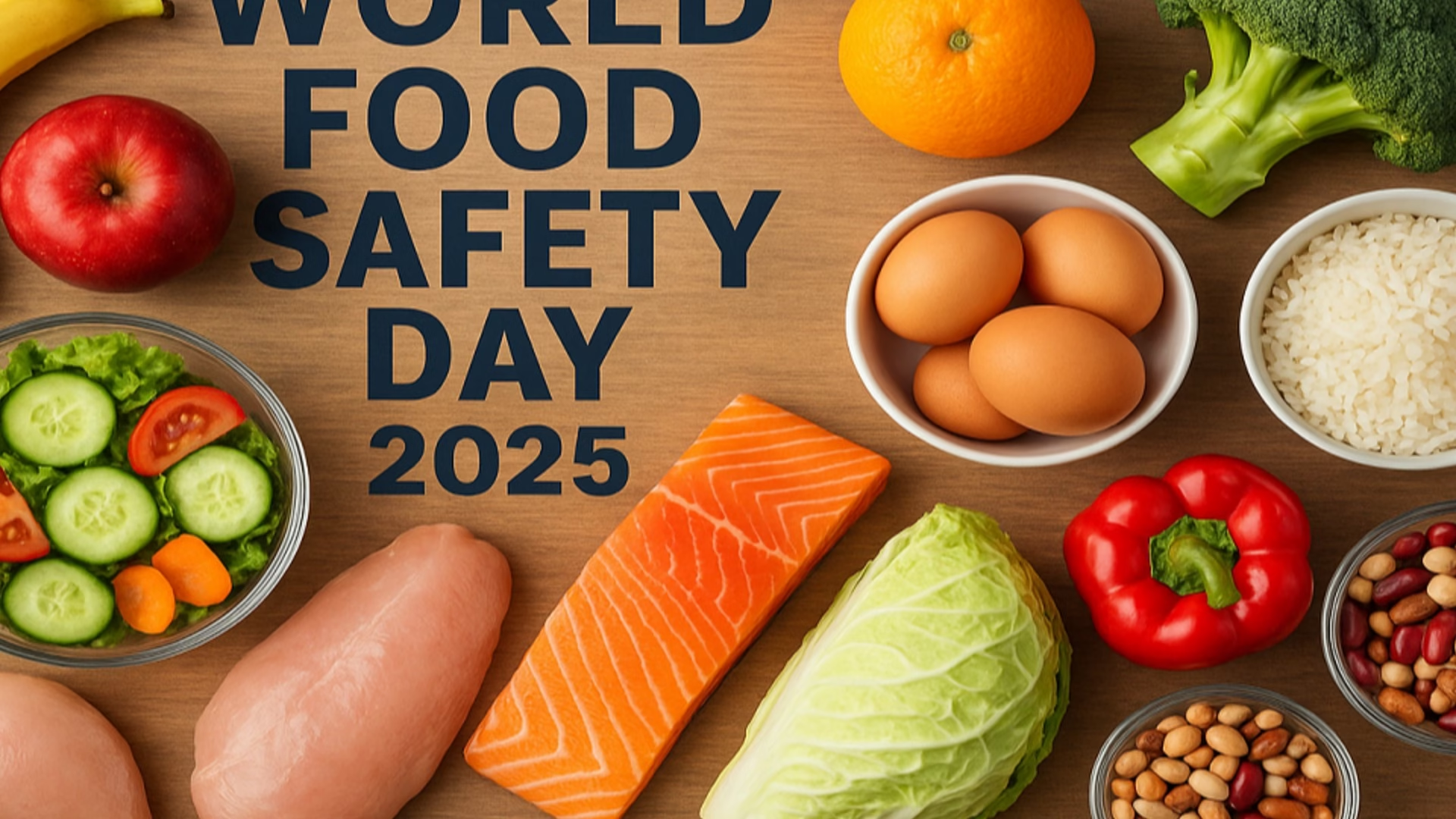World Food Safety Day 2025: Date, Theme, History, Significance and More
Every year on June 7, countries around the world observe World Food Safety Day, a vital United Nations initiative to raise awareness about the importance of keeping our food safe. This year’s theme—“Food Safety: Prepare for the Unexpected”—highlights the need for strong, resilient food safety systems that can handle sudden emergencies like natural disasters, pandemics, cyberattacks, and supply chain breakdowns.
As the world becomes more connected, food moves across many borders before reaching your plate. This global food network has benefits but also increases the risk of contamination. World Food Safety Day 2025 is a timely reminder that food safety is everyone’s responsibility—from farm to fork.
The Alarming Impact of Unsafe Food
According to the World Health Organization (WHO), 600 million people fall sick from contaminated food each year. Tragically, 420,000 people die, with children under five making up nearly 125,000 of those deaths.
The causes of foodborne illnesses range from bacteria (like Salmonella, E. coli, and Listeria) to viruses, parasites, and harmful chemicals. In countries with poor infrastructure, limited food safety awareness, and weak regulation, these dangers are even more serious.
Unsafe food not only affects health—it has major economic consequences. The World Bank estimates that foodborne illnesses cost low- and middle-income economies around $95 billion annually in lost productivity.
Why Food Safety Is More Critical Than Ever
Today’s food items often pass through multiple countries before reaching consumers. A snack you eat could include nuts from one nation, sweeteners from another, and be packaged in a third. Each step in the process brings new risks if safety standards are not followed closely.
Climate change adds to the challenge. Rising temperatures and unpredictable weather increase the spread of foodborne pathogens, fungi, and pests. At the same time, the COVID-19 pandemic exposed weaknesses in global food supply systems, showing how quickly emergencies can disrupt food production, transport, and sales.
This Year’s Theme: Prepare for the Unexpected
The 2025 theme focuses on the importance of preparation and resilience. Emergencies—whether floods, power outages, or disease outbreaks—can severely impact food safety. Without proper systems in place, food can become unsafe quickly.
To reduce these risks, governments and industries are urged to:
- Build risk-based inspection systems
- Share real-time food safety data
- Launch public awareness campaigns
- Develop robust traceability systems
- Conduct emergency drills and planning
Being ready can save lives, reduce waste, and ensure safe food even during crises.
WHO’s Five Keys to Safer Food
The World Health Organization promotes five simple principles that can prevent many food-related illnesses:
- Keep Clean – Wash hands, surfaces, and utensils often.
- Separate Raw and Cooked Foods – Use different tools and storage for each.
- Cook Thoroughly – Make sure food reaches the right temperature.
- Keep Food at Safe Temperatures – Refrigerate or heat to avoid the “danger zone.”
- Use Safe Water and Fresh Ingredients – Always choose clean, quality products.
These rules apply everywhere—from homes to restaurants and factories.
Ensuring Safety at Every Step of the Supply Chain
Food safety involves many players:
- Farmers must use clean water, manage pesticides, and ensure animal health.
- Processors and manufacturers should follow the HACCP system to catch and stop risks early.
- Distributors and retailers must maintain cold storage, hygiene, and proper labeling.
- Consumers play a role too—washing fruits and vegetables, storing leftovers properly, and staying informed.
Linking Food Safety to Global Goals
Safe food is tied to key United Nations Sustainable Development Goals (SDGs):
- SDG 2: Zero Hunger – Safe food is essential for food security.
- SDG 3: Good Health and Well-being – Preventing illness leads to healthier populations.
- SDG 12: Responsible Consumption and Production – Encourages sustainability.
- SDG 17: Partnerships – Global cooperation is needed for effective food safety.
No nation can achieve true food security without first ensuring food safety.
New Tech, Better Safety
Technology is also helping build safer food systems:
- Blockchain makes it easier to trace food items back to their source.
- AI and machine learning predict contamination risks and improve inspection efficiency.
- Smart packaging and biosensors detect spoilage or bacteria in real-time.
- Drones and satellites help monitor farms and water quality.
While technology can’t replace strict rules and human oversight, it adds powerful tools to our food safety arsenal.
Food Safety: Everyone Has a Role
World Food Safety Day is not just a date on the calendar—it’s a global call to action:
- Governments must pass and enforce smart regulations.
- Industries need to focus on training, transparency, and safety.
- Schools and universities should lead in research and innovation.
- Media must spread accurate food safety information.
- Consumers, like you and me, must stay alert and make informed choices.
As WHO Director-General Dr. Tedros Ghebreyesus said:
“There is no food security without food safety.”
Final Thoughts
With over 8 billion people to feed, food safety may seem like a quiet issue—but the moment it fails, the effects are loud and deadly. When it works, it goes unnoticed—and that’s exactly the goal.
World Food Safety Day 2025 reminds us that every bite should be safe, every time. Whether you grow, sell, prepare, or eat food, your actions make a difference. Let’s honor this day by staying prepared, spreading awareness, and taking responsibility for the safety of our food.
Take Action Today:
Learn the Five Keys to Safer Food, share them with your family, and support local and national efforts to improve food safety. Your next meal could save a life—or cost one. Make it count.
#WorldFoodSafetyDay #FoodSafety2025 #SafeFoodSavesLives #PreventFoodborneIllness #GlobalFoodSecurity
